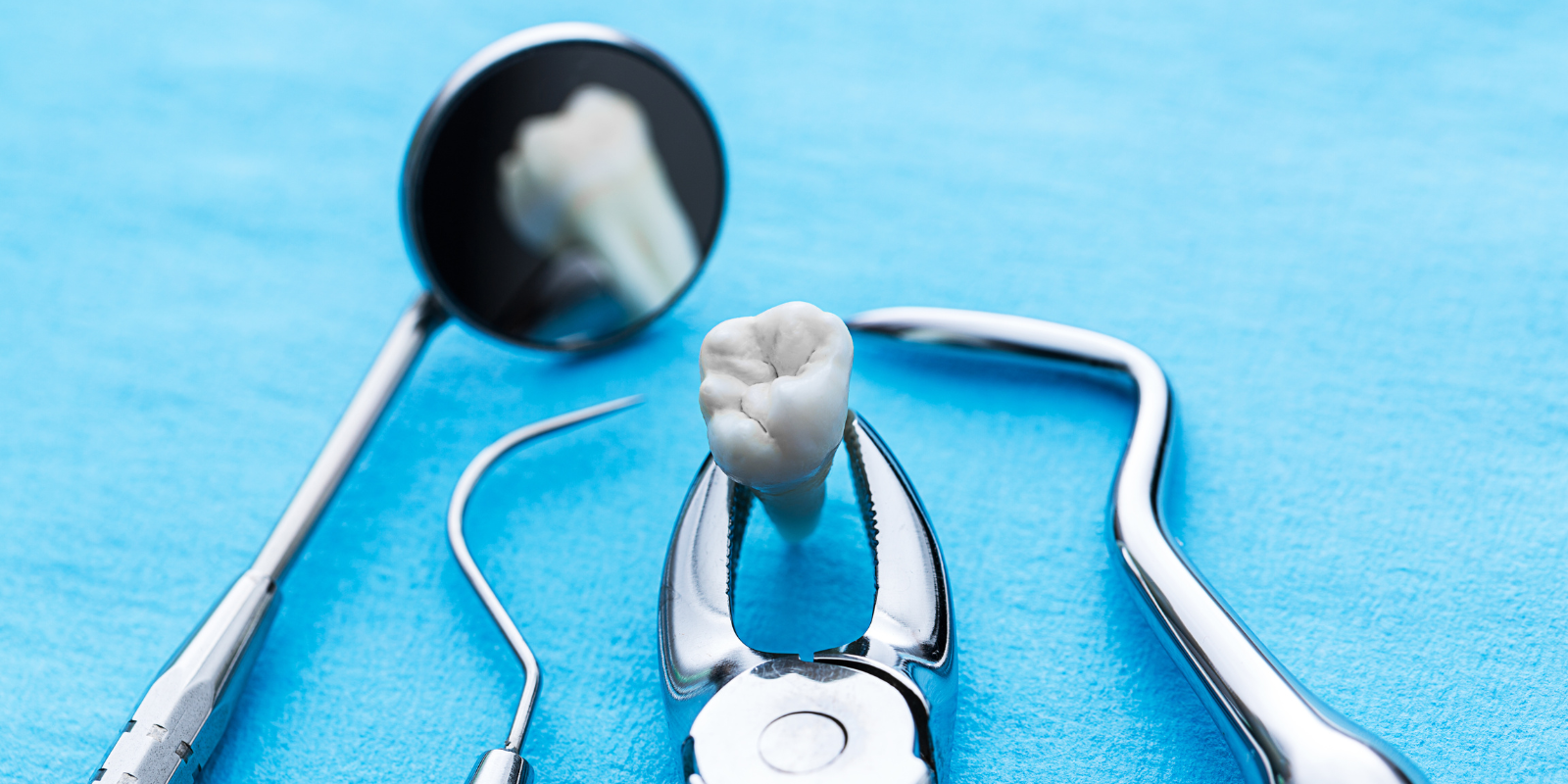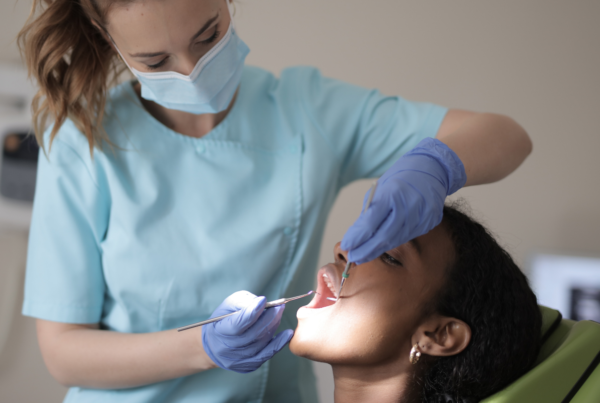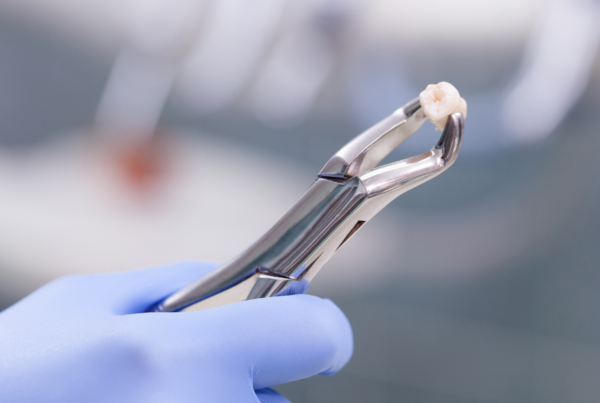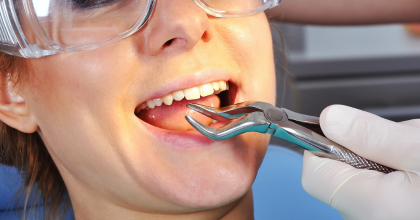Tooth extraction is a fairly burdensome but often necessary dental procedure that involves removing a tooth, including wisdom teeth. It requires patience and care for the wound area. One of the most important elements supporting the healing process is the right diet. Proper food choices not only accelerate healing but also minimize the risk of complications. Can you eat normally after tooth removal and what do the first days after the procedure look like?
Why is a proper diet after tooth extraction so important?
A diet plays a key role in the regeneration process after tooth extraction because it directly affects wound healing, prevents complications, and ensures overall comfort. Here are the reasons why it is worth paying attention to what you eat after the procedure.
- Supporting the healing process. After a tooth is removed, an open wound remains at the extraction site that requires time and the right environment to regenerate. A proper diet provides essential nutrients such as protein, vitamins (especially vitamin C), and minerals (such as zinc), which accelerate tissue repair.
- Avoiding wound irritation. Foods with improper consistency (hard, crunchy, sticky) can mechanically damage delicate tissues or leave food debris in the socket, leading to pain or infection. Well-chosen meals reduce this risk.
- Preventing dry socket. Dry socket is a painful complication that occurs when the blood clot is lost from the wound. A diet based on soft and semi-liquid foods and avoiding straws prevents negative pressure and protects the clot.
- Minimizing pain and discomfort. Gums are very sensitive after the procedure. Eating hot, spicy, acidic, or hard foods can cause significant discomfort. Mild, lukewarm foods help ease the pain and provide comfort while eating.
- Maintaining proper energy levels. The body needs energy to regenerate tissues and handle inflammation. Light and nutritious meals supply necessary calories and nutrients without burdening the digestive system.
- Preventing infections. Poor dietary choices, such as foods that are hard to remove from the mouth, can encourage bacterial growth near the wound. Carefully selected products protect the area from infection.
What to eat after tooth extraction? What should your diet look like in the first few days?
After extraction, it’s best to follow a “soft food” diet, choosing easy-to-consume items that don’t require chewing. For the first two days, meals should have a smooth consistency. Good examples include plain yogurt, lukewarm cream soups made from carrots, celery, broccoli, or tomatoes, mashed potatoes or mashed fruit like banana or apples, soft-boiled eggs or scrambled eggs, and fruit or vegetable smoothies rich in vitamin C.
Meals should always be lukewarm. Hot foods may irritate the wound, while cold ones can cause discomfort. Coffee is not recommended either, as caffeine may irritate the oral mucosa and affect the healing process. Caffeine can increase blood pressure and potentially lead to more bleeding from the socket.
What to avoid after tooth extraction?
For the first two hours after the procedure, do not eat or drink anything. It is crucial to avoid certain foods and habits that can delay healing or cause complications such as infections or dry socket. Patients should strictly follow dietary guidelines.
Avoid hard and crunchy foods like nuts, chips, crackers, or crusty bread, which can damage delicate tissues. Sticky and chewy items such as toffee, caramels, gum, or gummy candies are also risky as they stick to teeth and gums and are hard to clean from the wound.
Stay away from spicy and acidic foods like chili, pepper, citrus fruits, pickles, or fruit juices, as they can irritate the wound and delay healing. Hot dishes and drinks, including soups and tea, can cause pain or swelling. Coffee and caffeine may interfere with clotting and increase the risk of dry socket.
Carbonated drinks and alcohol should also be avoided, as they may irritate the socket and slow down healing. Alcohol can also interfere with the effectiveness of painkillers and antibiotics.
Do not drink through a straw, as this creates suction that may dislodge the clot, leading to dry socket. Avoid foods that require intense chewing, such as tough meats or raw vegetables like carrots or celery, which may stress the wound.
Stay away from foods like rice, small grains, or seeds that can get stuck in the socket and be hard to remove, potentially causing infection. Avoid smoking for several days, as tobacco smoke reduces oxygen supply to the tissues and raises the risk of infection.
READ MORE: Tooth extraction with inflammation
The role of hydration in the healing process after surgery
Proper hydration is essential for healing after procedures like tooth extraction. Water is critical for cellular function and metabolic processes involved in tissue repair. Staying hydrated supports cell renewal at the extraction site and speeds up recovery.
Well-hydrated tissues are more flexible and resilient, helping rebuild damaged areas more effectively. Drinking enough fluids also prevents dry mouth, which can cause irritation and raise the risk of infection. Hydration helps maintain the moisture of the mucous membranes, supporting their self-cleaning and protective functions.
Water also helps flush out toxins and metabolic waste that arise during the body’s inflammatory response. Without adequate hydration, the healing process slows, and the body becomes more susceptible to complications like dry socket. Regularly drinking fluids at the right temperature, such as still water or mild herbal teas, helps ensure optimal recovery.
Summary
Tooth extraction is a common dental procedure performed for reasons such as advanced decay, pulp inflammation, periodontal disease, fractures, or wisdom teeth crowding. Nutrition plays an important role in the body’s recovery and can significantly accelerate healing. Soft, gentle foods at the right temperature and avoiding irritating ingredients are key to a smooth recovery. If you have any questions or concerns after the procedure, always follow professional advice. Your dentist can guide you on how long to keep the gauze, what to eat after tooth extraction, and how to take care of the wound. Proper socket care, especially in the first hours after surgery, is essential for maintaining good oral hygiene.






